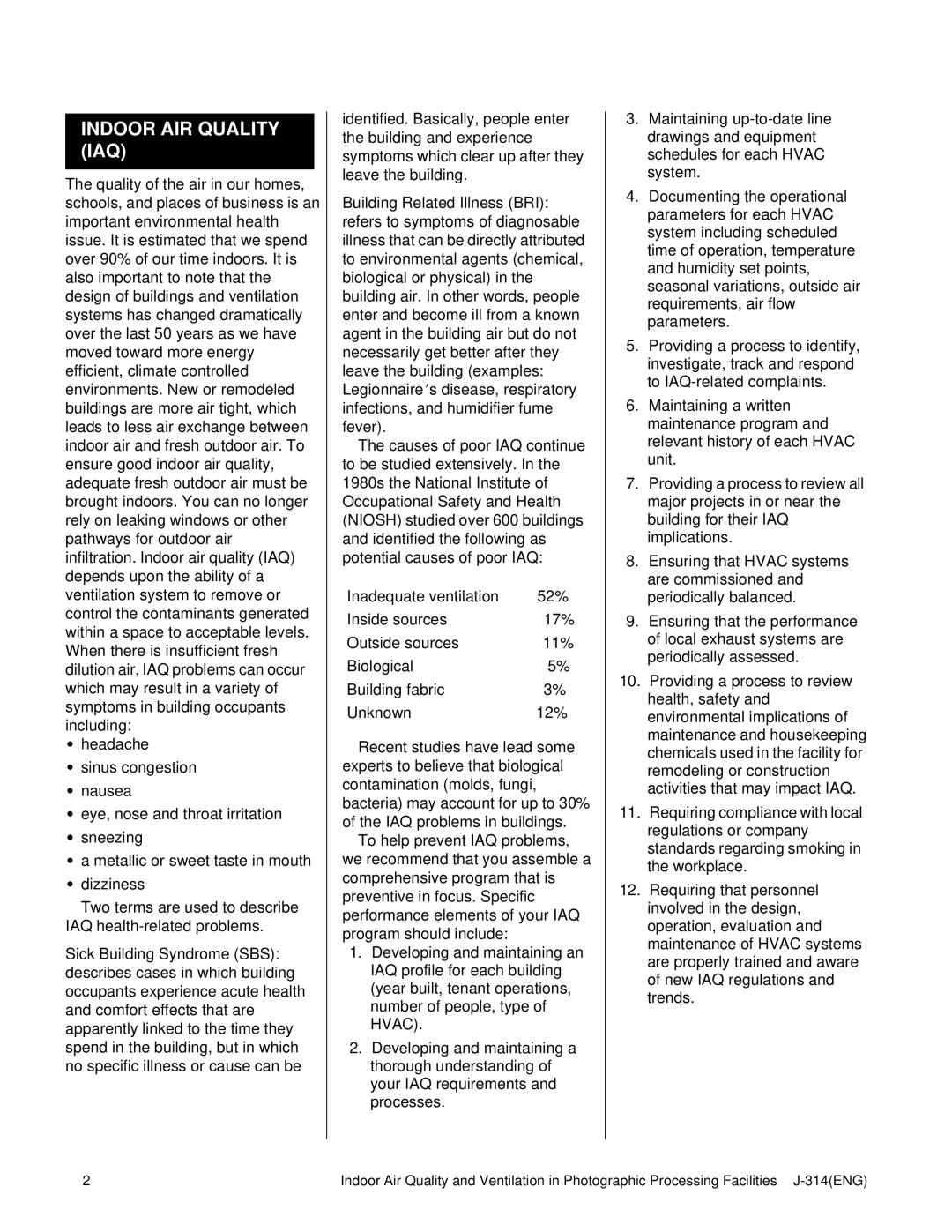
INDOOR AIR QUALITY (IAQ)
The quality of the air in our homes, schools, and places of business is an important environmental health issue. It is estimated that we spend over 90% of our time indoors. It is also important to note that the design of buildings and ventilation systems has changed dramatically over the last 50 years as we have moved toward more energy efficient, climate controlled environments. New or remodeled buildings are more air tight, which leads to less air exchange between indoor air and fresh outdoor air. To ensure good indoor air quality, adequate fresh outdoor air must be brought indoors. You can no longer rely on leaking windows or other pathways for outdoor air infiltration. Indoor air quality (IAQ) depends upon the ability of a ventilation system to remove or control the contaminants generated within a space to acceptable levels. When there is insufficient fresh dilution air, IAQ problems can occur which may result in a variety of symptoms in building occupants including:
•headache
•sinus congestion
•nausea
•eye, nose and throat irritation
•sneezing
•a metallic or sweet taste in mouth
•dizziness
Two terms are used to describe IAQ
Sick Building Syndrome (SBS): describes cases in which building occupants experience acute health and comfort effects that are apparently linked to the time they spend in the building, but in which no specific illness or cause can be
identified. Basically, people enter the building and experience symptoms which clear up after they leave the building.
Building Related Illness (BRI): refers to symptoms of diagnosable illness that can be directly attributed to environmental agents (chemical, biological or physical) in the building air. In other words, people enter and become ill from a known agent in the building air but do not necessarily get better after they leave the building (examples: Legionnaire’s disease, respiratory infections, and humidifier fume fever).
The causes of poor IAQ continue to be studied extensively. In the 1980s the National Institute of Occupational Safety and Health (NIOSH) studied over 600 buildings and identified the following as potential causes of poor IAQ:
Inadequate ventilation | 52% |
Inside sources | 17% |
Outside sources | 11% |
Biological | 5% |
Building fabric | 3% |
Unknown | 12% |
Recent studies have lead some experts to believe that biological contamination (molds, fungi, bacteria) may account for up to 30% of the IAQ problems in buildings.
To help prevent IAQ problems, we recommend that you assemble a comprehensive program that is preventive in focus. Specific performance elements of your IAQ program should include:
1.Developing and maintaining an IAQ profile for each building (year built, tenant operations, number of people, type of HVAC).
2.Developing and maintaining a thorough understanding of your IAQ requirements and processes.
3.Maintaining
4.Documenting the operational parameters for each HVAC system including scheduled time of operation, temperature and humidity set points, seasonal variations, outside air requirements, air flow parameters.
5.Providing a process to identify, investigate, track and respond to
6.Maintaining a written maintenance program and relevant history of each HVAC unit.
7.Providing a process to review all major projects in or near the building for their IAQ implications.
8.Ensuring that HVAC systems are commissioned and periodically balanced.
9.Ensuring that the performance of local exhaust systems are periodically assessed.
10.Providing a process to review health, safety and environmental implications of maintenance and housekeeping chemicals used in the facility for remodeling or construction activities that may impact IAQ.
11.Requiring compliance with local regulations or company standards regarding smoking in the workplace.
12.Requiring that personnel involved in the design, operation, evaluation and maintenance of HVAC systems are properly trained and aware of new IAQ regulations and trends.
2 | Indoor Air Quality and Ventilation in Photographic Processing Facilities • |
